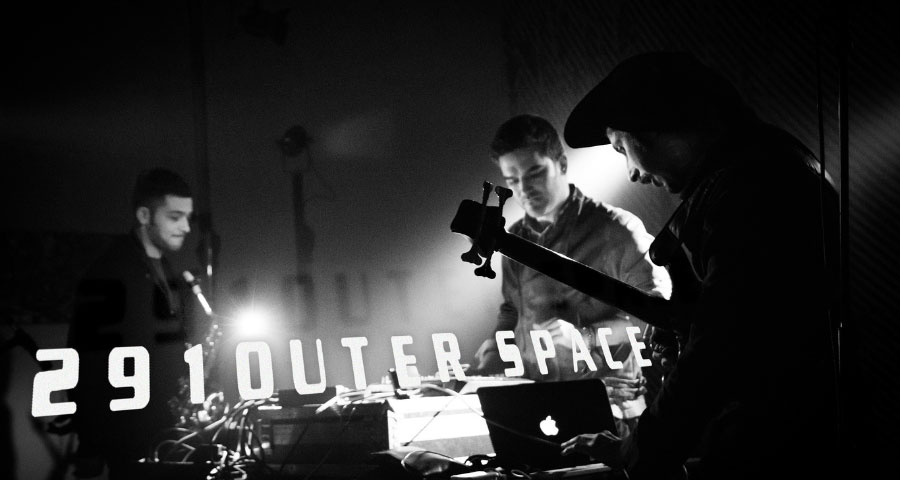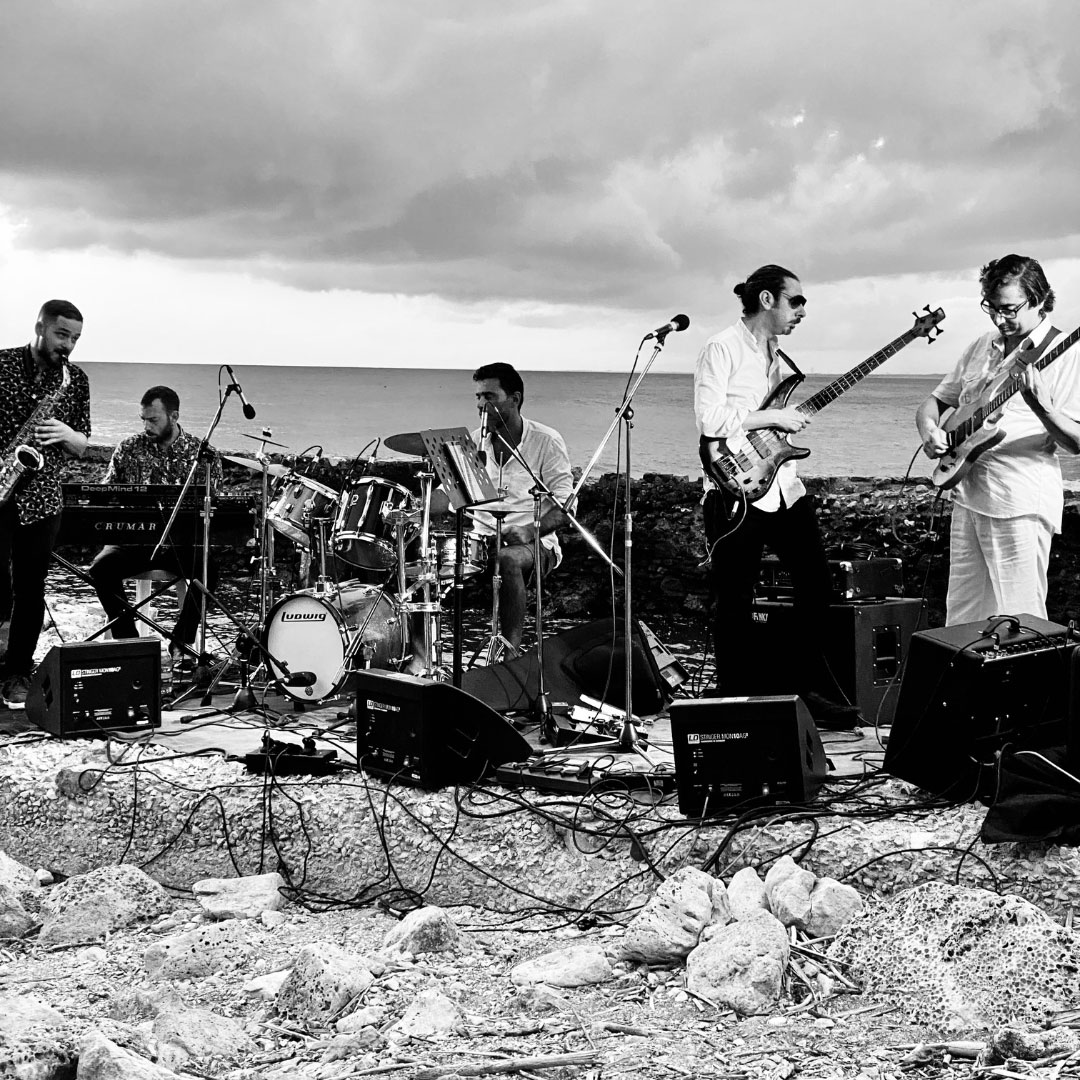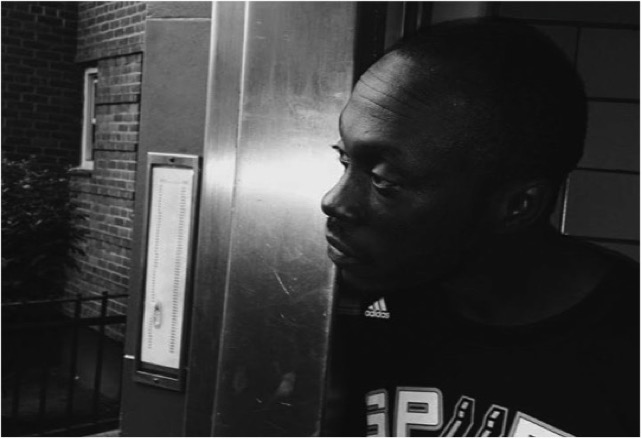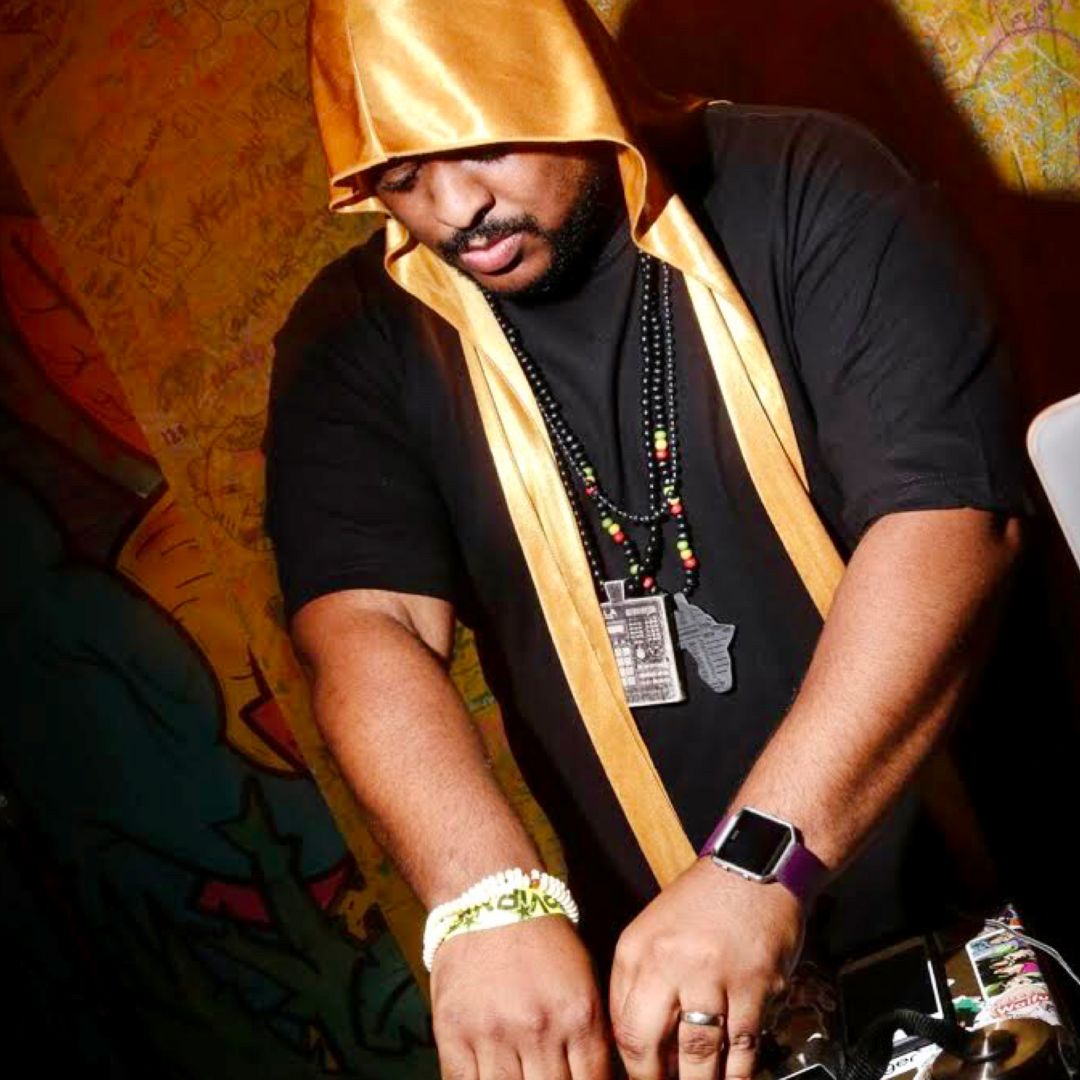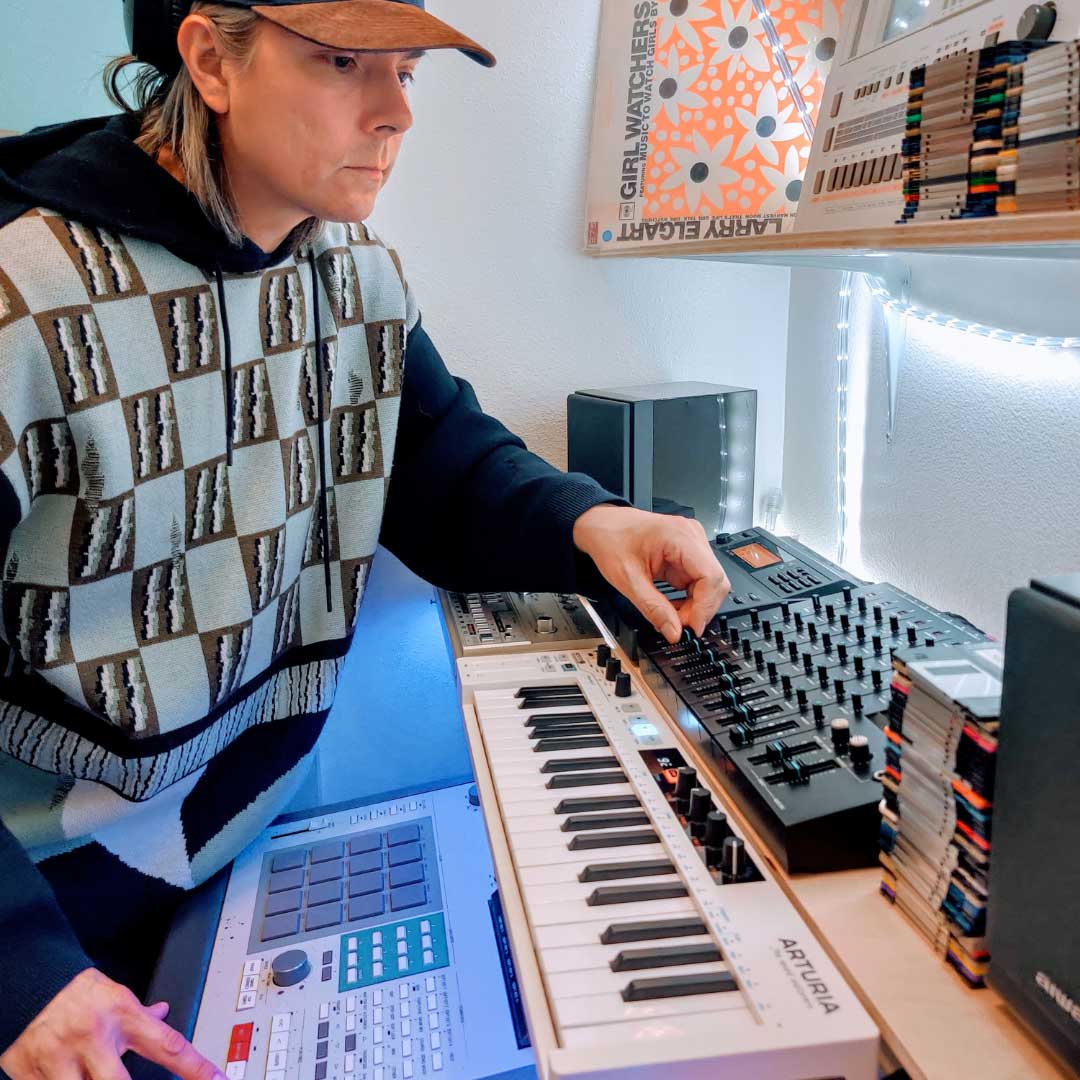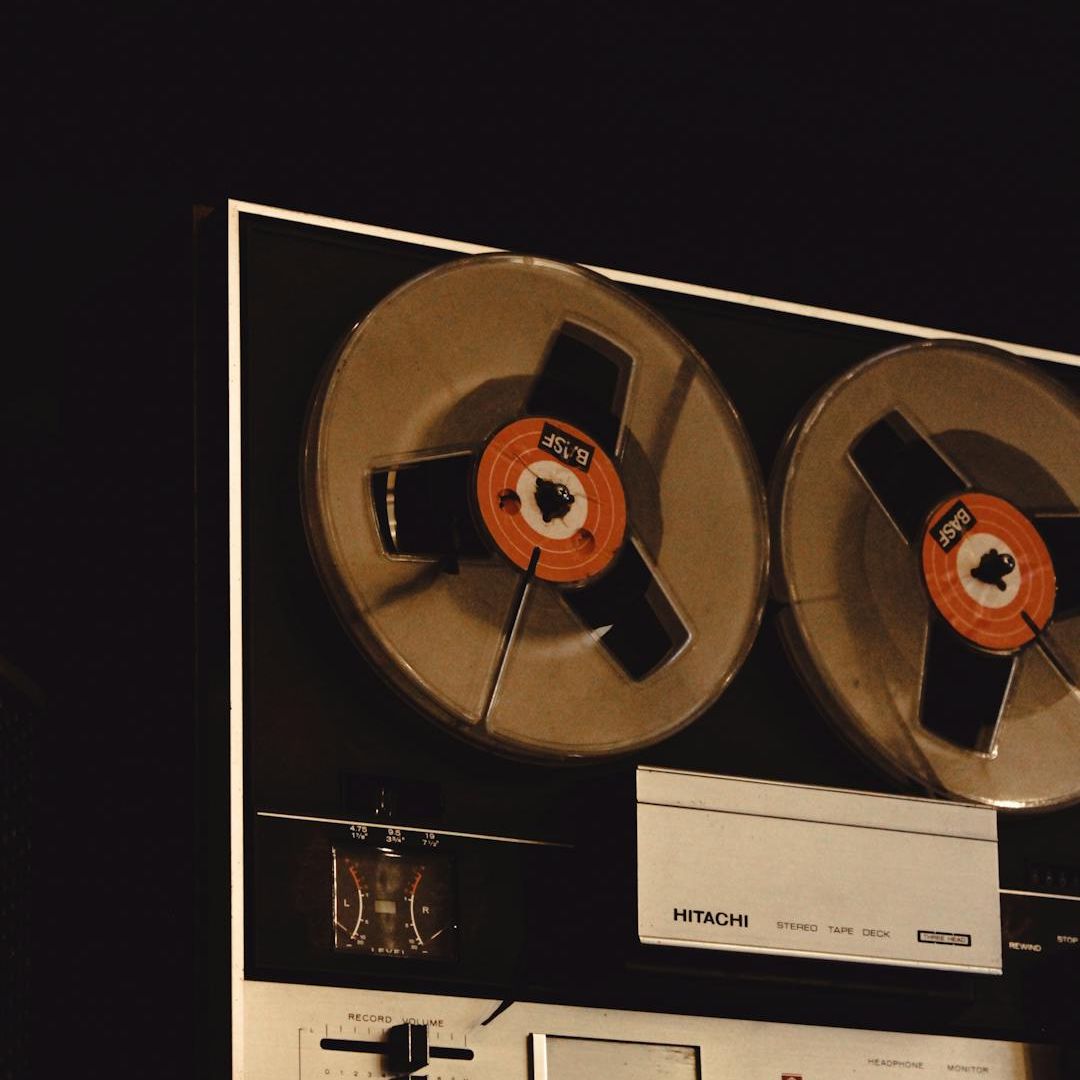291out and the origins of the new Neapolitan, powerful, jazz-funk explosion.
If you want, you can think of 291out as a rare and precious splinter of sonic resistance, and jazz-funk militancy, coming from an era when people still dreamed, and believed in a future.
Back then there weren’t big talks about “dystopian futures”, other than for some sci-fi novels from the so-called Urania collection (sorry for our non-Italian readers), and it was thought that a better world would and should be possible. It wasn’t necessarily better, it was different. It wasn’t all good, it wasn’t all perfect. It was slower, harder, more human, and less cumbersome. Don’t call it nostalgia, though, just facts. But let’s focus.
In addition to meeting one of the most shining and enduring examples of contemporary Italian jazz-funk, adored by critics and deejays alike across Europe, and scarcely known in its homeland, today I meet a piece of national underground music history and the too-well-kept secret to many.
According to the very few notes you can find here and there digging online, you’ll do the math quickly about their approach in terms of creative freedom, as you’ll learn that their name is inspired by Stieglitz’s Dadaist magazine “291“.
That’s something very important about them, as they do pay homage to that lawless, ironic, and creative movement that rejected the reasons and logic of pre-established rules. In 2023, that’s something that goes beyond comprehension.
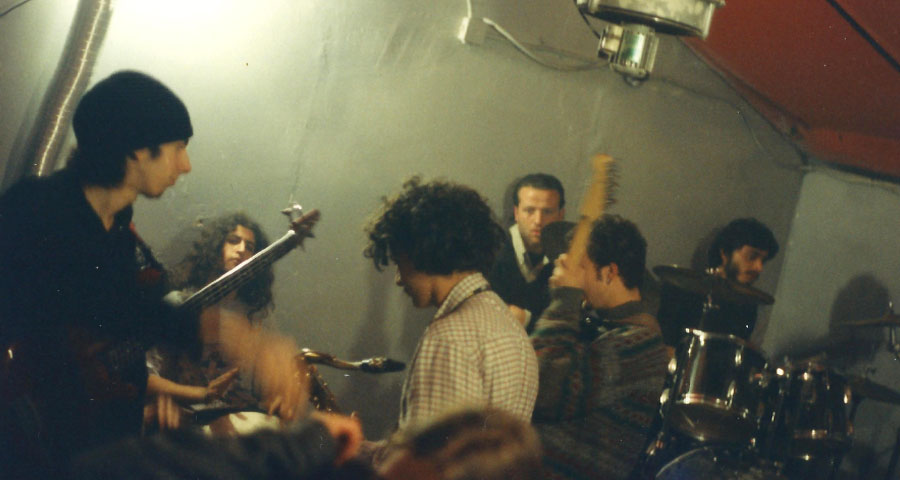
291out in the studio, 1996, Naples
An elusive outfit, an ensemble of musicians and dreamers, suspended between cinematography and notes, credits and lysergic suites. They have recently released their latest work under the pseudonym 291outerSpace, together with fellow traveller Ivan ‘Flyme’ Cibien, and the excuse is excellent for a chat without any filter.
The beginning of our journey: no cigarettes, no coffee, and a rainy day in Milan.
We are in Milan, Luca “Presence” Carini – bassist and founding member of the 291out outfit – and I, and we meet in a busy place close to the Central Station. A warm hug between Southern gentlemen, not even a coffee, the frenzy to discuss takes over. Immediately we start talking about everything and us, and especially about the times when music began, in every sense of the word…
“Those were the last years of the great cultural and political ferment of that era, in the streets, people thought they were changing the world. Those were the days of the Panther political movement, the great university and high-school occupations… then Berlusconi arrived, and in Naples there was Jervolino. Slowly but surely, everything changed…
– Luca “Presence” Carini
When Presence goes with his mind to the days of the genesis of the 291out outfit, there’s a glimpse of pride and joy in the eyes. The knowledge of self speaks clearly for a good chunk of a whole generation, other than for the rest of the band.
The rest of the crew is somewhere down the road to make it to the meeting, notably the drummer and founding member Antonio Bocchino and saxophonist Den Lacava, but the conversation has started already…
Let’s start from the beginning, Luca: how did it all begin for you and the band?
It was the early Nineties, we were class and schoolmates. We lived in a dimension of militancy, within the political universe aligned with the Left. The organised workers’ movement, with the universities, the high schools, the awareness of the class struggle, and the whole climate of the time echoed the politics and values of the 1970s, and consequently, the sound was always militant. On daily basis, we were on the streets, trying to make the world more liveable, more human.
The home of the group, Naples, back then was vibing and creative. In a different way than in recent years, possibly, but yet very fertile ground. They were surrounded by artistic contemporary greatness and inspired by an equally strong tradition of timeless influences, specifically rooted in the Seventies of the past century.
From the Pantera scene onwards, we were compared to a very young Speaker Cenzou, to the 99 Posse of the Crime Squad period, to Papa J, on the rap and reggae side. AlmaMegretta came out with “Figli di Annibale” in 1994, and they performed in incredible venues in the city centre, in close proximity to the political contestation of the period. In our eyes, it was a cohesive, strong movement with great musical qualities in its protagonists. The voices were authentic, warm, and militant.
The music had an expressive value that was never passive or complacent. It’s no coincidence that some things born in the Seventies were then introduced into the rehearsal rooms of the Nineties, where we got in touch with the likes of Enzo Petrone, the bass player first of Moby Dick and then of Osanna, in their final period.
Add to that the fact that my father knew and hung out with musicians such as Tony Esposito, Genny Sorrenti (Alan’s sister), and Shawn Phillips, just to name a couple, from a young age. We, unconsciously and reflexively, reproduced our parents’ militant Naples.
Luca “Presence” Carini
Musically speaking, what did you pick up on that Seventies period?
From our parents’ listening, consciously or unconsciously, we have absorbed a number of fundamental records, released between the end of the 60s and the end of the 70s, in particular the progressive rock.
I am thinking of the likes of Gentle Giant, Emerson Lake & Palmer, and Jethro Tull, to more sophisticated stuff like Soft Machine and Gong. Only to find that the same musical ideas were taken up and internalised in Italy too, by other contemporaries.
The Italian music industry and the domestic market had to cope with the growing demand of the time, so even in Italy you could find absurd things, like Gianni Leone’s Balletto di Bronzo, with seminal records like “YS”. Banco del Mutuo Soccorso, Pholas Dactilus. If we want to draw a red thread between what we absorbed and what is reflected in our sound, I would definitely say Baricentro from Puglia, Dedalus from Turin, Perigeo from Milan, and definitely Simonetti’s Goblin. From there the discourse and soundtrack strand opens up.
Prog and fusion styles meet avant-garde music, it is difficult to give you a simple answer, from English prog to new Italian pop, passing through jazz and rock of hybrid forms, with a contemporary approach.
Other than the music, I know you’ve just had other influences, growing up, right?
The cinema, the movies, and private movie clubs, for sure. Plus, the wild underground of local private TVs and free broadcasters of that era. All these influences also link music to images, and this is just us. This is the background that ended up in the cauldron of influences and stimuli to be kept in the studio when we compose.
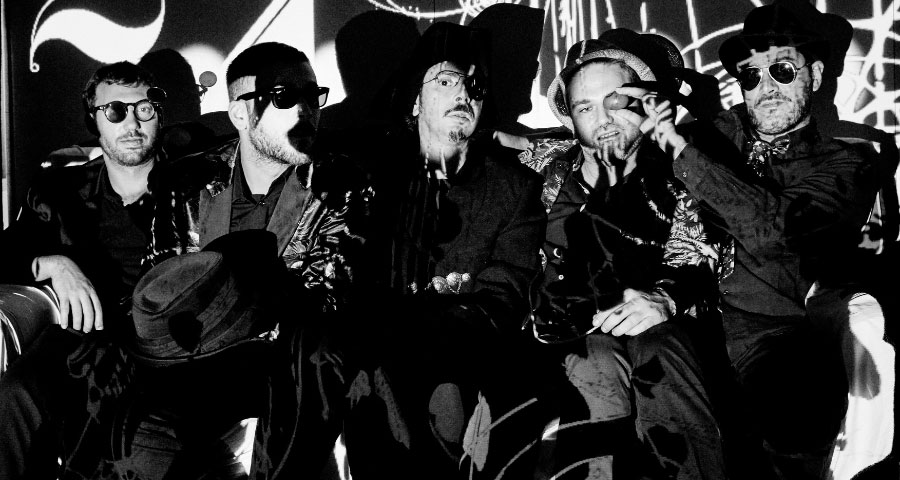
291out in full swing
From a century to another: navigating time and space for the 291out diaspora.
While we wait for Antonio and Danny, time is running fast but slow, so I can dive into more personal details with Luca. I am about to hear the whole story that led a Neapolitan band out of its town, in the late Nineties, to Italy’s own big city of dreams, Milan, and from there, after a long run, to my stereo.
How did you navigate the late Nineties and Y2K? Your first releases date back to this period, right?
We’ve been busy studying, and taking care of our personal growth and production. A period of diaspora from Naples, to try and find a decent working dimension, first and foremost. Personally, I started studying at the Civic School of Cinema in Milan. After that, I went on an internship as a production assistant and director, experimenting as the director behind the video camera.
At the end of a two-year period, a transition to advertising production and various apprenticeships. Little by little, all the other band members arrived in Milan, some to follow the same cinematographic path, some the musical one. In 2003 we self-produced a debut film, for which we also produced the music. The movie won the Bassano Film Festival, the first IPA short film NUIT YLIO – the opening of a new cycle, also with 3D technology, pioneering stuff also as a language.
A technical production path that then died immediately afterwards. We went ahead. Enlisted in Fast Forward, we start working on video productions such as direction and many soundtracks. We are present in various productions as background music from 2004 to 2008.
For years we have made music applied to short audiovisual products, of which practically no trace remains in Italy today. Products with a very ephemeral life. We have gradually recovered it all, thanks to the interest and work of courageous labels, which have practically recovered our “lost” soundtracks from certain applications, as we call them in the jargon. We opened the taps and bridged the gap.
Our rediscovery in a record key has allowed us to give a real-life to these materials. It’s bizarre, because from the beginning of our releases in 2013, until 2016, when we enter the studio for Return To Urania, all the previous material is the result of the soundtrack activity from 2000 to 2010.
Our first three (Acido Records & Really Swing) are compendiums of previous material. This means that good music has no age.
From short soundtrack recordings to live performances and new arrangements.
The wait for the rest of the group is over, as Danny and Antonio have joined at the table, and the timing couldn’t be better. We’re about to discuss the transition to these very days, and how the group’s output took longer forms than the short-end titles theme. Things are going to be as interesting and detailed as one would expect from such an outfit.
Would you like to delve into how your seminal album, Return To Urania, was originally born and how it arrived in the recording studio in its current form, which is the one most of us know and love?
The composition “Urania (End Titles)” – which marked our debut album in 2013 with Acido Rec. for the various “Soundtracks For No Film Vol.1” – was written for the short movie “Dialogue between a coach and his assistant” (directed by Giorgio Carella, produced by Fandango Lab), which was made 10 years earlier. The song was created for the end credits of the movie, hence the duration of the composition was only 2’06”.
The owner of Acido Rec., Andreas Krumm, thought of publishing the song exactly as it was conceived in 2003, with the same length as the original version. In the following years, many of our enthusiastic listeners told us that it would have been nice to have an extended version of “Urania“.
Finally, as we were playing live at the second edition of the Terraforma Festival at Villa Arconati in Milan, in 2015 we decided to bring the aforementioned song to the stage by expanding its two main parts and adding a new central funky cell to the brass solos, for a total duration of over 10 mins.
The performance was followed closely by Riccardo “Riccio” Zanaroli, an old friend and record producer in years to come of three of our works. He, on a wave of enthusiasm, introduced us to Lorenzo Bandiera of Fly By Night Music shortly after our live performance of “Urania“.
Initially, Riccio’s idea was to take us to the recording studio with the legendary Trinidadian singer Jimmy Chambers, who exactly a year before – for Fly By Night Music – had published a 10-inch format “You Can Fight It“. Chambers, for those who don’t know him, other than being famously the lead singer of early 90s outfit Londonbeat, was active since the late 60s, with groups like the Four Kents and Dada, and later, a protagonist of some disco-styled LPs, with Midnight first, and Central Line later.
In 1974, he also performed as the main voice and wrote part of the arrangements of the mysterious psychedelic afro-rock album “You See The Light“, as part of the Batti Mamzelle group, on Cube Records.
So, the intention of Riccio and Lorenzo – who had relations with Chambers – was to give new life to the main track of Mamzelle’s album, and we were supposed to revitalize the song with his original interpreter. The studio was already booked in Milan, the arrangements ready to be recorded, but Bandiera, shortly before the recording sessions, informed us of the sudden disappearance of Chambers in the city. Apparently, it was due to unresolved tax issues with the British authorities, from the time of Londonbeat…
Not knowing how to proceed at that point, with the risk of a no-show with the studio and the whole Chambers’ tax fuzz, Riccio came up with the idea of recording that extended version of the “Urania“, as performed a few months earlier at Terraforma.
In no time we recorded the song in its new 11’41” form, extending even further the central pattern of kick and piano Rhodes, which hypnotically unravels after the obligato in 7/8 that concludes the funky section with the solos of the brass.
In addition to this version, which became the main version, we recorded some variations for three different environments (one of which – the last version on side B – in tribute to the spaghetti western). In fact, this approach to library music style is a direct consequence of our activity in applied music.
The album was released in December 2016, with a presentation concert in Milan. To this day, it remains one of our most representative compositions, to the point of always being present in live performances.
What is the main difference between composing for a soundtrack and producing actual albums?
In the first case, it is essential to be in tune with the visual work and the author, to conceive the music as an expressive tool that follows the evolution of the images and the plot of the story.
The music, therefore, as an accompaniment, completion, or interpretation of the images – in a relationship of interdependence with sounds and voices – plays a fundamental role in the narrative development of the work. For this reason, the soundtracks represent an incredible laboratory of experimentation and creativity for us.
When producing albums, the composition follows different paths, not necessarily anchored to a visual dimension, and often revolves around a central idea or theme from which the different tracks are developed and modulated.
We always try to give stylistic and formal unity to the compositions that will form the album, both because we still believe in the cultural and artistic value of the “concept album“, and also because we often conceive the music as a story.
Take for example “Escape from the Arkana Galaxy“, produced by Simona Faraone‘s New Interplanetary Melodies in 2018: a concept that tells the story of the lost cargo ship 291out in the mysterious Arkana Galaxy through music. The illustrations conceived by Simone Antonucci, who is also the author of almost all of our album covers, contribute to making the images evoked by the music visible.
In this regard, it should be said that in the 1980s, during our childhood, the listening (strictly on audiocassettes) of the “storytellers” – the sound fairy tales that arrived at the colourful newsstands of the period every fifteen days – had obviously exercised a considerable influence on our unconscious.
The stories were read and interpreted by famous movie and theatre actors (from Mariangela Melato to Giulietta Masina, from Giorgio Gaber to Gastone Moschin) whose voices could be heard, along with the splendid music and special sound effects, by browsing the illustrated pages of the bundles.
This practice was therefore the basis of a project like the Arkana Galaxy, whose boards accompanied by the texts inside the gatefold, serve as a guide to listening and immortalising characters and settings in images, whose voices appear in the sound story (such as the dramatic monologue of the protagonist, Captain David Gardner, played by Gianluca Morelli in the final piece “Cryogenesys” on side D).
The collaboration with an illustrator is therefore fundamental for us in the realization of a musical work, even simply in creating a cover image that condenses the entire artistic concept; it is even more so in an era when albums have become dematerialized.
How are the 291out tracks built?
The construction follows a non-schematized trajectory, there’s no predetermination or encoded manners in our studio recording practice. It is a sort of “continuum” between present/past, synchronous/diachronic, and inside productions, as well as outside collaborations, connect tracks from common or individual studio sessions, acoustic tracks from our extensive sound archive, and digital expansions.
Think of the like of a “sound construction site” that is meticulously worked on, following the evolution of the original idea that often gives rise to the writing of the entire considered work.
In this regard, it is interesting to mention the composition experience of the song Fantasia Mélange which was literally improvised on a drum sample launched by Walter “Quiroga” Del Vecchio, owner of the Really Swing label and producer of our mini-lp “Really Swing Vol. 7“.
Luca Carini and Vincenzo Ciorra, respectively, recorded the bass and the guitar on the A-side of that fragment during the session at Amaro Studio, in Naples, but the subsequent expansion of the compositional writing took place only the following year by Carini himself with Ivan Cibien, in Milan, with new bass recordings and the integration of drum fills by Antonio.
In 2016, the brass of Daniele Lacava and Roberto Dazzan, the author of all the thematic phrases, was added. However, it will take until 2020 to revisit the track, with the addition of the alto and tenor sax solos, always by Lacava.
At that point, in the summer of the same year, Piero Paolinelli, owner of the Roman label Cognitiva Records, proposed to publish it in the various “Outlines” along with the English label ANMA Records, in Spring 2021.
To complete the song, resulting in the definitive draft that we can listen to on the record, we had also the intervention of Niccolò Barozzi who wrote the parts for electric piano, Moog synthesizer, and vibraphone, then performed them along with Howard Birak, from Turin. The post-production by Ivan Cibien was concluded in the autumn of 2020.
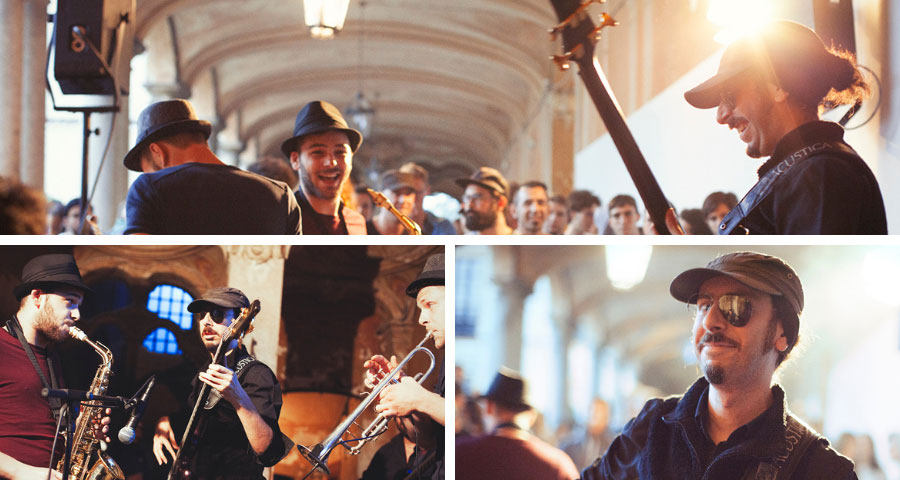
291out live exhibition at Terraforma Festival, 2015, Milan
So, in the course of six years, here’s an example of how a composition, born in a playful and casual way, became a multi-voiced elaboration structured as an ensemble with the intervention of many protagonists who, in turn, took turns over time.
One of our favourite albums from your catalogue is “L’Alba dei Vinti“. What is the story behind it and how was the collaboration with Bop Singlayer born?
There’s a 30-year relationship that links some of us, particularly Presence, to the electronic music producer Luca Affatato aka Bop Singlayer. The collaboration that emerged has had a certain continuity since the mid-90s and has resulted in a unique combination of the band’s electro-acoustic sound and Bop’s electronic vision, often dedicated to uncompromising experimentation.
Along this path, which included various productions in the dance arena, there were opportunities where we were involved in each other’s projects, sharing both our worlds.
In 2004, for the soundtrack of the short movie “Ovest” (directed by Giorgio Carella, and produced by Swiss Italian Radio and Television), we needed to tell the story of Lugano in the 80s, so the sounds that Luca proposed at that time fit perfectly with the context. We placed the song “Workin’ Glam” into the score (which was released 10 years later, almost in its entirety, by Acido Records in the album “Soundtracks for No Film Vol. 2“).
In recent times, it was Luca who thought of our participation in his debut album “Self-Portrait“, a summary of his unique stylistic universe and the foundation of the Best Company record project in 2015. Aside from the song “L’Uomo Dalle Nuvole” for the various “The Sweetest Vol. 1” on Bosconi Extra Virgin in 2016, and a series of unfinished works still in the making.
“L’alba dei vinti” came out on Early Sound Recordings in 2017 and featured keyboardist Michele Boy and singers Giovanna Lubjan and Gianluca Morelli. The title is a nod to George Romero’s Dawn of The Living Dead but takes inspiration also from the cycle of the defeated: a series of five novels that author Giovanni Verga wrote to depict the struggle for existence, thus highlighting the tragic consequences of the flood of progress on the weaker social classes.
The EP, structured as a concept, although not produced for the images of a movie, is effectively thought of as a soundtrack, the result of a common affection for the genre films of the Seventies and Eighties. The long instrumental suite, which opens the album on side A and gives the title to the album, begins by paying homage to Fabio Frizzi and John Carpenter, Gary Numan’s cold wave and groups like Tuxedomoon.
Then the music takes on the guise of a dark and triumphant march that, with its obsessive march, explicitly cites Goblin in the slow and dragging advance of zombies in Dawn of the Living Dead. That was a following to the cult movie “Night of the Living Dead” by director George Romero, which imbues the zombie protagonists of the film with a strong social critique as a symbol of consumer society.
Side B opens with the dim light of a slot room in the back of a bar in the province, the aptly titled “Slot Machine”, where the narrator, in homage to Vincent Price in the John Landis’ “Thriller” video clip, introduces a song declined in various languages, with a prominent character of the Neapolitan dialect.
How have you lived the recent international exposure brought to the Neapolitan musical scene by deejays and bands like Napoli Segreta and New Genea?
As Neapolitans, we are proud of the important national and international exposure of Naples and the music that is produced today in our city. Furthermore, we are very happy that independent projects are successful just as much as commercial productions that are much more attractive to the market: this means that an attentive, curious, and non-niche audience exists and can still have a say!
In turn, the attention received by bands like New Genea and, to a lesser extent, groups like Banda Maje and Fitness For Ever, should make our activities and our record distribution journey easier in some ways.
However, it is important to remember that the work of 291out, in relation to this kind of new Neapolitan wave, is much closer to the “Neapolitan Power” experience. It was a phenomenon limited to a historical period in which musicians and music, carried by a militant and self-critical approach towards a difficult reality such as that of the south between the seventies and eighties, conveyed a highly stratified sound discourse.
Groups like Osanna, Balletto di Bronzo, Saint Just, Napoli Centrale, Tony Esposito, Alan Sorrenti and, last but not least, Città Frontale and Cervello, through their music, carried forward a fusion between tradition, local musical culture (especially the melodic one) and international influences.
Think of the rhythmic and harmonic suggestions of funk, jazz, Anglo-Saxon prog rock, avant-gardes, and folk and ethnic music. The aforementioned groups created an unprecedented, spontaneous and absolutely unique sound mosaic. An approach, therefore, sought after at several levels and not premeditated, which has little to do with the recent disco and Mediterranean-funk revivalism.
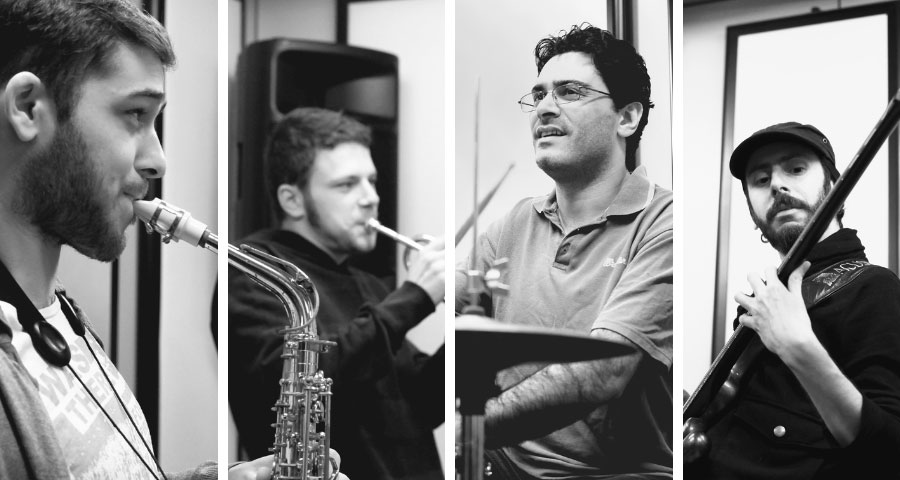
291out in a studio session, 2022, Milan
Life and music on other planets: the 291outer space experience and its musical landscapes.
What is the main difference between 291out and 291outer space?
Over time, the need emerged to create a structure that allowed the band members to perform and produce music closely related to electronic music, within circuits dedicated to this vast world: a sort of parallel project that focused on predominantly space environments and maintained the evocations of celluloid.
Thus, the basis of 291outer space is the idea of a fusion language – borrowed from the experience of the 291out project and its imaginative sound – in which the inorganic combines with the organic through cosmic debris, funk influences, kraut variations and science fiction scenarios.
From this new structure, the possibility was to create an original and independent production repertoire from the already consolidated repertoire branded 291out. Consequently, it led also to a performance that, for the expressed themes and the evoked imagination, had a precise characterization in terms of representation.
The 291outer space crew wears uniforms, is staged according to the roles that the members have in the story, and the live performance is entirely accompanied by the illustrated boards that serve as the stage design.
Against the background of this dancefloor-declared decline, there is the twenty-year experience in the Milanese clubbing world of Luca (who for years paralleled the role of DJ and artistic director for various clubs) and sound engineer Ivan Cibien (DJ and founder of the Milanese electronic duo Starsgarage with Andrea Modena).
In 2009, when we met at the Avatara recording studio, we started collaborating on the recording of a commercial, in which the fusion between organic and synthetic elements was applied in full. With the entry of Ivan – who had meanwhile begun, under the pseudonym Flyme, a personal DJ journey – into 291out as the sound technician, the idea of turning towards new horizons manifested itself.
Part of the material produced with some band members, between 2009 and 2012, was only released many years later, especially after the 2018 release of the debut album “Escape From The Arkana Galaxy” (whose origin dates back to 2015, the year in which both Luca and Ivan left the club world and related activities).
After the pandemic, at the beginning of 2022, some of the aforementioned materials were published, with new arrangements, by Taste Rec.
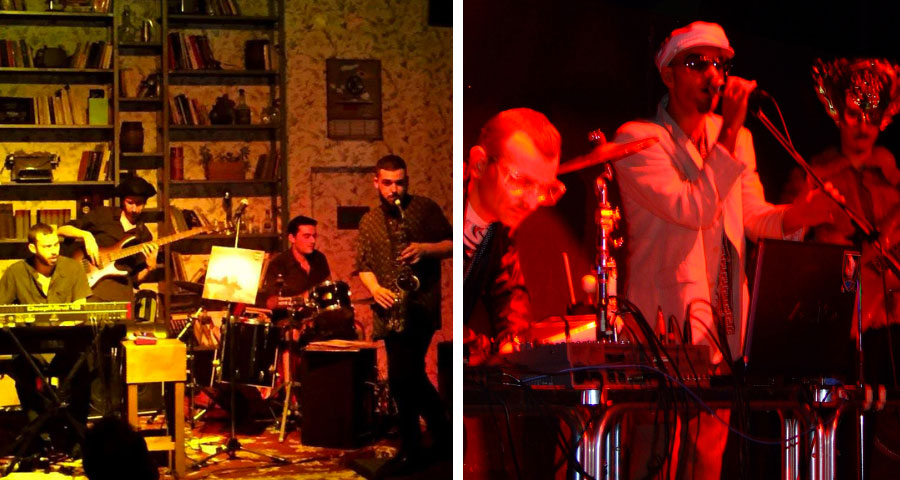
291out live at OM (L), 291outer space live debut (R)
The concept bears the English title “Beyond,” although the title, credits, and all information are written in Korean ideograms. It is from this distant country that the idea of using its unique phonetics to interpret the poetic-philosophical texts written for the occasion by Luca arises. Almost like an alien that speaks on behalf of the mysteries of the universe, Dongae Lee, the soprano hired to perform the singing, was supposed to echo – in the original idea of 291outer space – the extraterrestrial Diva Plavalaguna, who in Luc Besson’s 1997 film “The Fifth Element” enchanted passengers on the Fhloston Paradise cruise ship with her talent.
Once again, references to cinema and space, a fusion of genres (in this case, between the world of opera and electronics) and a mix of arts. Finally, anticipating the specific question, what will be the ultimate meeting between the two projects – 291out and 291outer space – through the interpenetration of their languages: “Urania 2070.”
The work, originally conceived for Fly By Night Music as the third chapter of the saga – after “Urania (End Credits)” and “Return to Urania” – was started in the summer of 2019, then suspended during the pandemic biennium.
Today, while waiting to complete the mixing, “Urania 2070” is, in effect, the product of the meeting of musical trajectories that, symmetrically, have travelled side by side for almost a decade; they were ahead of the trend in the present (and future) sound patterns, intersecting codes that were once far apart, starting from that increasingly vast container that is electronic music.
